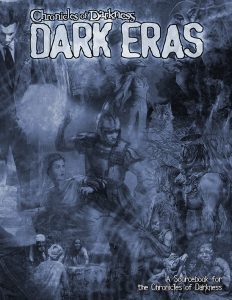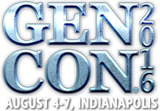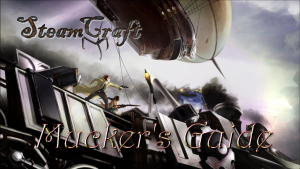I am pleased to announce that Chronicles of Darkness: Dark Eras, a book that spans multiple eras for the Chronicles of Darkness game lines, is now available. As the Kickstarter text explained, the Chronicles of Darkness: Dark Eras starts out presenting a chapter for each of nine historical eras. The sections were written for the currently available edition of the game line, but they are designed to be usable with any edition. Each terrifying time period and location is examined through the supernatural creatures that dwell there, and my section is:
Hunter: The Vigil — Doubting Souls (1690-1695): Immigrants and tribes struggle to co-exist on the eastern seaboard. Violent clashes, supernatural beliefs, and demonic influences spell disaster for Salem Village and its surrounding towns, while other hunters fight werewolves and vampires on the frontier. With so much at risk, only god-fearing men and women are deemed innocent — and those are few indeed. Monica Valentinelli writer & Matt McElroy developer.
“Doubting Souls” is, in many ways, my commentary on the Salem Witch Trials; the chapter primarily focuses on the gut-wrenching decisions hunters have to make and how they are caught up in the hysteria. It also, however, offers possibilities for other styles of play and expands the setting a bit so we’d hit as many notes as possible within the confines of this tightly-woven section. There are opportunities to explore multiple locations, including Boston and Ipswich, and new compacts are offered as well. Since offering the first draft to fans, there have been some additions and expansions to the chapter, and we added additional reference materials to highlight our research, too.
Though this Chronicles of Darkness: Dark Eras chapter, in no way shape or form, could ever replace a set of modern history books on the time period, I feel very strongly about the necessity of research; I hope that you will notice this effort reflected in how we put together this alternate history perspective. “Doubting Souls” is a depiction of a world in the 1690s that’s slightly different from this reality–but much, much darker…especially for hunters of all types.
I hope that fans will enjoy “Doubting Souls” for Hunter: The Vigil, and I encourage you to check out the other chapters, too! Huzzah!





